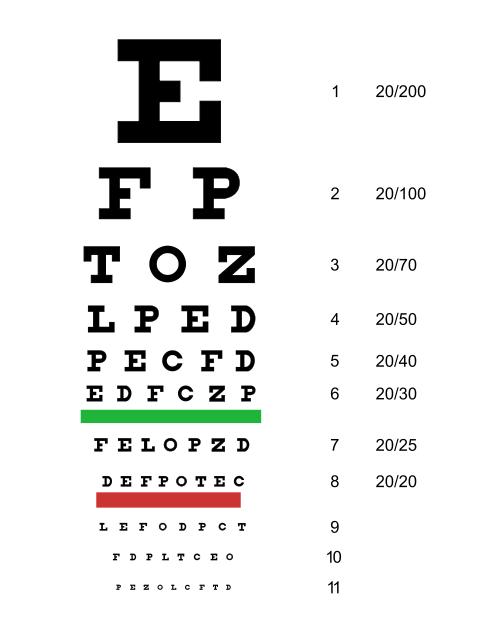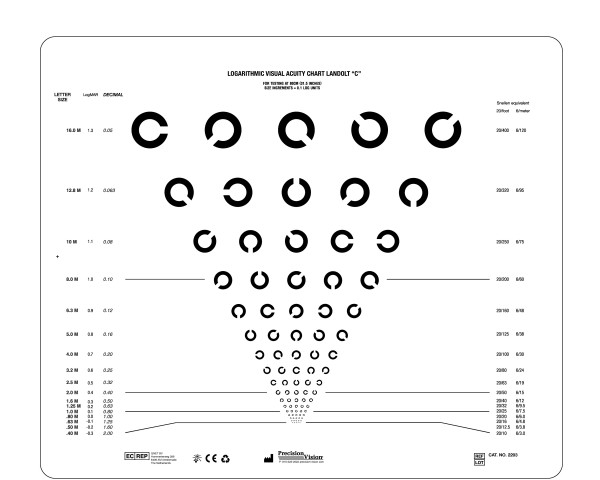Originally written: 2018.01.01 20:46;Updated 2019.05.03 15:00
20/20 vision is just so 19th century. In many locations it is referred to as 6/6, in Europe as 1.0. Vision acuity tests originate with their invention in 1843 by ophthalmologist Heinrich Kuechler (1811–1873), in Darmstadt, Germany.

In 1862, Dutch ophthalmologist Herman Snellen (1834 – 1908) developed an optotype to estimate visual acuity. Optotype? Most people call it by its synonym, eye chart. In full size, the E at the top will be 88.7 mm (3.5 inches) tall. The other letters are proportionately smaller. When viewed at a distance of 20 feet = 6096 mm, normally rounded down to six meters, acuity can be estimated based on the smallest line a person can read.
In 1888, Swiss born/ Paris resident Edmund Landolt (1846-1926) improved upon this with the Landolt C, a broken ring that uses the Snellen letter C. Both the stroke width and the gap are 1/5 of the diameter. The gap can be oriented in various positions. Normally, there are eight different alignments, each 45° apart. The person being examined must decide where the gap is. The size of the ring is reduced until a specified error rate is exceeded. The Landolt C is the standard chart used for acuity measurement in most European countries. It is specified in ISO standard 8596.

In the first paragraph, 20/20 vision (and two equivalents) were referred to. 20/20 is just an American reference value for visual acuity. In the rest of the world this norm was called 6/6 vision. In Europe, they actually perform division on the numbers and end up with 1.0 to describe a condition where, at 6 meters distance, a human eye is able to separate contours that are approximately 1.75 mm apart. Vision of 20/40, 6/12 or 0.5 corresponds to lower, vision of 20/10, 6/3 or 2.0 to better performance.
Normal individuals have an acuity of, or better than, 20/13.3, 6/4 or 1.5, but it is dependent on age and many other factors. 20/20, 6/6 or 1.0 vision is not perfect or even particularly good acuity. It is simply good enough. To drive smaller commercial vehicles in Norway, 20/25, 6/7.5 or 0.8 acuity is required. For passenger vehicles the requirement is 20/40, 6/12 or 0.5.

